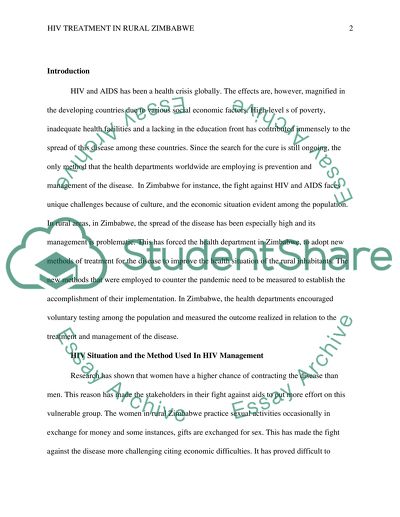Cite this document
(“HIV Treatment in Rural Zimbabwe Term Paper Example | Topics and Well Written Essays - 1000 words”, n.d.)
HIV Treatment in Rural Zimbabwe Term Paper Example | Topics and Well Written Essays - 1000 words. Retrieved from https://studentshare.org/health-sciences-medicine/1451435-hiv-treatment-in-rural-zimbabwe
HIV Treatment in Rural Zimbabwe Term Paper Example | Topics and Well Written Essays - 1000 words. Retrieved from https://studentshare.org/health-sciences-medicine/1451435-hiv-treatment-in-rural-zimbabwe
(HIV Treatment in Rural Zimbabwe Term Paper Example | Topics and Well Written Essays - 1000 Words)
HIV Treatment in Rural Zimbabwe Term Paper Example | Topics and Well Written Essays - 1000 Words. https://studentshare.org/health-sciences-medicine/1451435-hiv-treatment-in-rural-zimbabwe.
HIV Treatment in Rural Zimbabwe Term Paper Example | Topics and Well Written Essays - 1000 Words. https://studentshare.org/health-sciences-medicine/1451435-hiv-treatment-in-rural-zimbabwe.
“HIV Treatment in Rural Zimbabwe Term Paper Example | Topics and Well Written Essays - 1000 Words”, n.d. https://studentshare.org/health-sciences-medicine/1451435-hiv-treatment-in-rural-zimbabwe.


